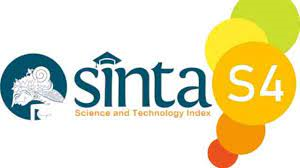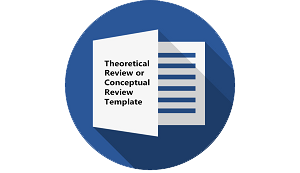Racism of the Main Character in 42 Movie Directed by Brian Helgeland
DOI:
https://doi.org/10.30957/ijoltl.v6i2.676Keywords:
Main Character, Movie, Racism, 42 MovieAbstract
The purpose of this research is to identify the types of racism and the effect of racism on the main character in 42 movies directed by Brian Helgeland. The method of this analysis is the descriptive qualitative method. The results of this research are 1.) The types of racism of the main character are Individual Racism and Cultural Racism. 2.) There are three effects of racism on the main character; the social relation of the main character to his teammates, the violence of his opponent, and injury because of violence.
Downloads
References
Badie, B., Berg-Schlosser, D., & Morlino, L. (2011). International Encyclopedia of Political Science. London: SAGE Publications, Inc.
Bangura, Y., & Stavenhagen, R. (2005). Racism and public policy. Racism and Public Policy. Basingstoke: PalgraveMacMillan. https://doi.org/10.1057/9780230554986
Beaumont, D. M. (2009). The massage behind the movie: how to engage without disenganging your faith. Chicago: Moody Publishers.
Belgrave, F. Z., & Allison, K. W. (2018). African American Psychology: From Africa to America. London: SAGE Publications, Inc.
Bhui, K. (2002). Racism and Mental Health: Prejudice and Suffering. London: Jessica Kingsley Publishers.
Blundell, J., McNeill, P., & Griffiths, J. (2003). Sociology As : The Complete Companion (Ocr). Cheltenham: Nelson Thornes.
Eagleton, T. (2008). Literary Theory: An Introduction. Minneapolis: University Of Minnesota Press.
Fredrickson, G. M. (2002). Racism: A Short Story. New Jersey: Princeton University Press.
Harrell, S. P. (2000). A multidimensional conceptualization of racism-related stress: Implications for the well-being of people of color. American Journal of Orthopsychiatry, 70(1), 42–57. https://doi.org/10.1037/h0087722
Hornby, A. (2010). Oxford Advance Learner’ Dictionary, 8th edition. Oxford: Oxford University Pers.
Hughes, M., & Kroehler, C. J. (2010). Sociology: The Core, Eight Editions. New York: The McGraw-Hill Companies, Inc.
Jones, E., Haenfler, R., & Johnson, B. (2007). The Better World Handbook: Small Changes That Make A Big Difference. Gabriola Island: New Society Publishers.
Klarer, M. (2004). an Introduction To Literature Studies. London: Routledge. https://doi.org/10.4324/9780203414040
Mooney, L. A., Knox, D., & Schacht, C. (2007). Understanding Social Problems, Fifth Edition. Thomson Wadsworth. Belmont: Thomson Wadsworth.
Newman, D. M. (2012). Sociology Exploring the Architecture of Everyday Life Twelfth Edition David. London: SAGE Publications, Inc.
Orlowski, P. (2011). Teaching About Hegemony: Race, Class and Democracy in the 21st Century. Berlin: Springer Science+Business Media.
Roshida, R. (2015). Understanding Al-Mutanabbi: A Humanistic Psychological Approach. Pulau Pinang: Universiti Sains Malaysia Press.
Taufik, M., & Hasniar. (2016). Racism in 12 Yeras A Slave Movie. Elite: English and Literature Journal, 03(01), 104–120.
Yastanti, U., Suhendar, J., & Pratama, R. M. D. (2018). Figurative Language in Song Lyrics of Linkin Park. Wanastra: Jurnal Bahasa Dan Sastra, XIII(2), 35-42
Yastanti, U., & Widhiyanto, B. (2018). The Persistency of Main Character in The Revenant Directed by Alejandro G. Inarritu. Progressive, XIII(1), 23–34.
Broadfoot, P., Murphy, R. and Torrance, H. (eds). (1990). Changing Educational Assessment: International Perspectives and Trends. London: Routledge.
Cunningsworth, A. (1984). Evaluating and selecting EFL teaching materials. London: Heinemann Educational Books.
De Wever, B., Schellens, T., Valcke, M., & Van Keer, H. (2006). Content analysis schemes to analyze transcripts of online asynchronous discussion groups: A review. Computer & Education, 46, 6-28.
Dubin, Fraida, and Elite Olshtain. (1986). Course design: Developing Programs and Materials for Language Learning. Cambridge: Cambridge University Press.
Ellis, Rod. (1997). The empirical evaluation of language teaching materials. ELT Journal, 51(1), pp. 36-42
Griffiths, C. (1995). Evaluating materials for teaching English to adult speakers of other languages. Forum 33(3): 50. Retrieved
from http://forum.state.gov/vols/vol33/ no3/p50.htm
Hsieh, H.-F., & Shannon, S.E. (2005). Three approaches to qualitative content analysis.
Qualitative Health Research, 15(9), 1277-1288.
Hutchinson, T and & Torres, E. (1994). The Textbook as an Agent of Change. ELT Journal 48,4.
Hutchinson, T. & Waters, A. (1987). English for specific purposes: A learning-centered approach. Cambridge: Cambridge University Press.
Kondracki, N. L., & Wellman, N. S. (2002). Content analysis: Review of methods and their applications in nutrition education. Journal of Nutrition Education and Behavior, 34, 224-230.
Kulm, G., Roseman, J. E., Treistman, M. (1999). A Benchmarks-Based Approach to Textbook Evaluation. Science Books & Films, 35 (4). Available at: http://www.project2061.org/publications/textbook/articles/approach.htm
Lawrence, Wing Pak Wong. (2011). Textbook Evaluation: A Framework for Evaluating the Fitness of the Hong Kong New Secondary School (NSS) Curriculum. Master’s Thesis. Hong Kong: City University of Hong Kong.
Longman dictionary of contemporary English (4th ed.). (2003). Harlow, England: Longman.
Masuhara, H. & Tomlinson, B. (2008). Materials for General English. In B.Tomlinson (Ed), English Teaching Materials: A Critical Review (pp. 17-37). London: Continuum.
McDonough, J. & C. Shaw. (1993). Materials and Methods in ELT. Oxford: Blackwell.
McDonough, J. & Shaw, C. (2003). Materials and methods in ELT: A teacher’s guide. (2nd Ed.). Malden, MA: Blackwell Publishing Ltd.
McGrath, Ian. (2001). Materials Evaluation and Design for Language Teaching. Edinburgh: Edinburgh University Press.
McGrath, I. (2002). Materials Evaluation and Design for Language Teaching. Edinburgh: Edinburgh
Monbec, Laetitia. (2020). Systematic Functional Linguistics for the EGAP Module: Revisiting the Common Core. Journal of English for Academic Purposes, 43: 1-14. https://doi.org/10.1016/j.jeap.2019.100794
Montasser, A. Wahab. (2013). Developing an English Language Textbook Evaluative Checklist. IOSR Journal of Research & Method in Education, 1(3), 55-70. www.iosrjournal.org.
Mukundan, J., Hajimohammadi, R. and Nimehchisalem, V. (2011). Developing An English Language Textbook Evaluation Checklist. Contemporary Issues in Education Research – June 2011. Volume 4, Number 6
Oakey, David. (2020). Phrases in EAP academic writing pedagogy: Illuminating Halliday’s influence on research and practice, Journal of English for Academic Purposes, 44. 1-16. https://doi.org/10.1016/j.jeap.2019.100829
Okitasari, I. & Palupi, D. (2019). Teachers' perceptions toward EFL textbook.
ELT in Focus, 2(2), 77-86.
Patton, M.Q. (2002). Qualitative Research and Evaluation Methods. Thousand Oaks, CA: Sage.
Peacock, M. (1997). Choosing the right book for your class. Retrieved from http: //www.sx.ac.uk/linguistics/pgr/egspll/volume1/ PDFs/PEACOCK1.pdf
Purwati, Ratna Annisa. (2019). Evaluation on ESP Course Book: Get Along with English for Hotel Industry. Journal of English Educator Society, 4(2), 106-116. DOI: 10.21070/jess.v4i2.2432.
Rahimy, R. (2007). A coursebook evaluation. ESP World, 6, Issue 2(15). Retrieved from http://www.esp-world.info/contents.htm.
Ramadhana, A. Muhammad; Indah Dwi Opik & Suhardi. (2019). An Evaluation of English Language Textbook: Interlanguage English for Senior High School Students. Jurnal Studi Guru dan Pembelajaran, 2(1), 32-40.
Rea-Dickens P, Germaine K. (1994). Evaluation a textbook. In Candlin and Widdowson (ed.), Oxford: Oxford University Press.
Richards, J. C. (2001). Curriculum development in language teaching. Cambridge: Cambridge University Press.
Sahim, Senem. (2020). Developing a Checklist for English Language Teaching Course Book Analysis. International Journal of Education and Research. 8(1): 107-120. www.ijern.com
Sheldon, L. E. (1988). Evaluating ELT textbooks and materials. ELT Journal, 42(4):237-246.
Skierso, Alexandra. (1991). Textbook Selection and Evaluation. In M. Celce-Murcia (Ed.), Teaching English as a second or foreign language, 432-453. Boston: Heinle and Heinle Publishers.
Solikhah, Imroatus. (2014). Buku Teks Akademik Berbasis Kompetensi untuk Mahasiswa Jurusan Non-Bahasa Inggris (Penelitian dan Pengembangan di Perguruan Tinggi Negeri di Jawa Tengah dan DIY). Ph.D dissertation. Doctorate Program in Indonesian Language Education. Surakarta: Universitas Sebelas Maret.
Solikhah, Imroatus. (2015). Designing Academic Literacy Framework of EAP Program for Indonesian Learners. Journal of Language and Literature, 6(2): 34-38.
Stake, R. E., Hood, S. and O’Sullivan, R. G. (eds) (1991) Advances in Program Evaluation: A Research Annual: Using Assessment Policy to Reform Education, Part A, Vol. 1, (Greenwich, CT: JAI Press).
Tesch, R. (1990). Qualitative Research: Analysis Types & Software Tools. Bristol, PA: Falmer Press.
Ur, P. (1996). A course in language teaching: Practice and theory. Cambridge: Cambridge University Press.
Weber, R. P. (1990). Basic content analysis. Beverly Hills, CA: Sage.
Yapici, Burcin, Org. (2019). Textbook Evaluation in English Language Teaching: Solutions, Preintermediate. KUSAD, 2(1), 62-74.
Zhang, Yan & Wildemuth, Barbara. (2016). Qualitative Analysis of Content. Available online at:
https://www.semanticscholar.org/paper/Qualitative-Analysis-of-Content-by-Zhang-Wildemuth/b269343ab82ba8b7a343b893815a0bae6472fcca. Retrieved on 2 August, 2020.
Downloads
Published
How to Cite
Issue
Section
License
Authors who publish with this journal agree to the following terms:
- Authors retain copyright and grant the journal right of first publication with the work simultaneously licensed under a Creative Commons Attribution-ShareAlike 4.0 International License that allows others to share the work with an acknowledgement of the work's authorship and initial publication in this journal.
- Authors are able to enter into separate, additional contractual arrangements for the non-exclusive distribution of the journal's published version of the work (e.g., post it to an institutional repository or publish it in a book), with an acknowledgement of its initial publication in this journal.
- Authors are permitted and encouraged to post their work online (e.g., in institutional repositories or on their website) prior to and during the submission process, as it can lead to productive exchanges, as well as earlier and greater citation of published work (See The Effect of Open Access).












